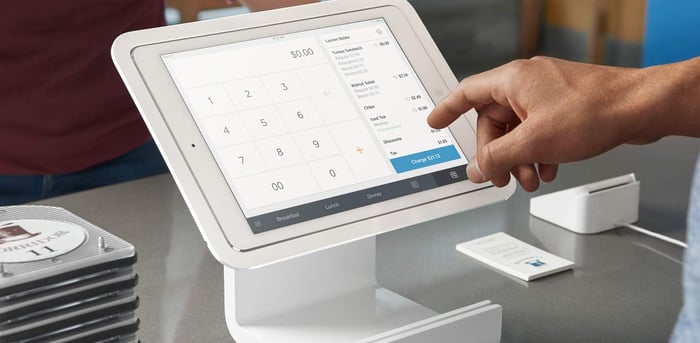Square (SQ 0.51%) recently posted strong second quarter numbers that beat analyst expectations. The fintech company's adjusted revenue (which excludes transaction-based costs, bitcoin costs, and deferred revenue adjustments) rose 60% annually to $385 million, topping estimates by $17 million.
Square's total net revenue rose 48% to $815 million as its total transaction-based revenues rose 30% annually to $625 million. Its GPV (gross merchandise volume), the total value of all transactions across its platform, climbed 30% to $21.4 billion.

Image source: Square.
On the bottom line, Square posted a net loss of just $6 million for the quarter, compared to a $16 million loss in the prior year quarter. Its adjusted EPS rose 86% to $0.13 per share, clearing estimates by a penny, as its adjusted EBITDA surged 87% to $68 million.
(Mostly) rosy guidance
For the current quarter, Square expects its adjusted revenue to rise 58%-60% annually, which exceeds analyst expectations. However, its adjusted EPS forecast of $0.08-$0.10 fell short of the consensus forecast of $0.13.
Yet Square still raised its net revenue guidance for the full year from $3.03-$3.09 billion to $3.19-$3.22 billion, which would equal 45%-46% growth. It also hiked its adjusted revenue guidance from $1.45-$1.48 billion to $1.52-$1.54 billion, implying 54%-57% growth. Square CFO Sarah Friar attributed that higher growth to the company's "ongoing momentum" in software and services.
Square also expects a narrower net loss of $0.17-$0.21 for the full year, compared to its prior forecast for a loss of $0.24-$0.28. It then reaffirmed its prior forecast for its adjusted EBITDA to grow 73%-80%, and for its adjusted EPS to climb 56%-70%.
An expanding software ecosystem
Square originally disrupted the traditional POS (point of sale) industry with its card-reading dongles, iPad-based POS systems, and stand-alone Square Register products. It then tightened its grip on businesses with an expanding ecosystem of cloud-based services for analyzing data, managing customer relationships, tracking inventories and payroll, and creating websites. It even provides business financing through its Square Capital unit.
Square also offers Square for Restaurants, which helps restaurants managing bookings, payments, and deliveries (via its Caviar service) on a single platform. Its Caviar for Teams platform lets groups of customers order food deliveries in a shared cart.
Caviar only controls about 4% of the US food delivery market according to Second Measure, but Square stated that revenue from the platform "more than doubled" annually (without providing a specific sales figure) during the second quarter.

Image source: Square.
On the consumer front, Square Cash is now the third most popular P2P payments app in America after PayPal's (PYPL -0.27%) Venmo and Zelle, according to eMarketer. Nomura Instinet analyst Dan Dolev also believes that Cash is growing at a faster rate than Venmo, partly due to its support for bitcoin purchases.
Square stated that its customers spent $250 million with the app's Cash Card (its debit card) in June, nearly tripling from December and representing $3 billion in spending on an annualized basis. PayPal also launched a competing debit card for Venmo in June.
The growth of all these platforms boosted Square's adjusted subscription and services-based revenues by 131% annually to $137 million during the quarter. That figure will likely keep rising as Square expands its ecosystem and cross-sells more services to its existing customers.
Does Square still have room to run?
Square's growth is impressive, but the bears often claim that the stock is too hot to handle. Square's stock certainly isn't cheap: It trades at 8 times this year's net revenue estimate (and nearly 18 times its adjusted revenue estimate), and over 150 times this year's adjusted earnings.
Square's stock isn't for queasy investors. However, I believe that Square's accelerating growth will continue as it continues to disrupt the traditional POS system market, expands its cloud ecosystem to lock in customers, and introduces new consumer-facing services to challenge PayPal and other P2P payment players.





